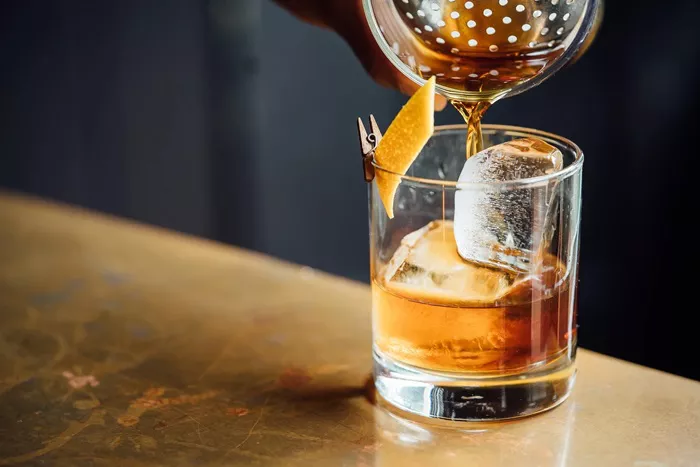In the vast realm of mixology, one term that often captivates both seasoned bartenders and cocktail enthusiasts alike is the concept of a “dry” cocktail. What makes a cocktail dry? Is it the choice of spirits, the proportions of ingredients, or the mixing technique employed? In this exploration, we delve into the intricate nuances that define the dryness of a cocktail, shedding light on the factors that contribute to this elusive quality.
The Foundation: Understanding Dryness in Cocktails
What makes a cocktail dry is fundamentally tied to the balance of sweetness and acidity within the drink. Dryness, in this context, refers to the perception of less sweetness on the palate. Achieving the perfect equilibrium involves a meticulous interplay of various components, where the choice of base spirits plays a pivotal role. High-proof spirits, such as gin or vodka, are often preferred in dry cocktails, as they provide a clean canvas for other ingredients to shine. What makes a cocktail dry, therefore, begins with the selection of spirits that set the tone for the desired flavor profile.
The Role of Vermouth: A Crucial Element in Dry Cocktails
When pondering what makes a cocktail dry, vermouth emerges as a key player. Vermouth, a fortified wine infused with botanicals, holds the power to sway a cocktail towards dryness or sweetness. In classic examples like the Martini, a dry vermouth is typically favored to complement the dry nature of the gin. However, it’s the careful balance between the vermouth and the base spirit that determines the overall dry character of the cocktail. Bartenders masterfully navigate this fine line to craft libations that are not just dry but also nuanced and sophisticated.
Balancing Act: The Influence of Citrus in Dry Cocktails
Citrus, with its vibrant acidity, introduces another layer of complexity when unraveling what makes a cocktail dry. While cocktails like the Margarita rely on lime juice to provide a zesty kick, the ratio of citrus to other ingredients is crucial in maintaining a dry profile. Bartenders meticulously measure and experiment to strike the right balance, ensuring that the acidity enhances the overall dryness without overpowering the drink. What makes a cocktail dry, in essence, is the ability to harmonize the tartness of citrus with the other components in a symphony of flavors.
See Also: How Much Alcohol is in Claffey’s Frozen Cocktails?
Bitters: The Secret Weapon for Dry Cocktail Artistry
What makes a cocktail dry often lies in the subtle and mysterious world of bitters. These concentrated and aromatic infusions, typically derived from herbs, roots, and spices, add depth and complexity to a drink. In the realm of dry cocktails, bitters act as a secret weapon, binding together disparate elements and imparting a dry, intriguing finish. Whether it’s a classic Manhattan or an Old Fashioned, the judicious use of bitters is a hallmark of expert mixology, defining what makes a cocktail dry while elevating its overall sensory experience.
Exploring Dryness through Technique: Stirring vs. Shaking
The technique employed during the mixing process is another facet to consider when unraveling what makes a cocktail dry. Stirring and shaking represent two distinct methods, each influencing the final product in unique ways. Stirring, commonly associated with spirit-forward drinks like the Martini, promotes a gentler integration of ingredients, allowing for a silky texture and highlighting the dry nuances of the chosen spirits. On the other hand, shaking, often employed for cocktails with fruit juices, introduces aeration and dilution, potentially softening the drink’s dryness. Bartenders, attuned to the artistry of mixology, carefully select the appropriate technique to achieve the desired dry character in each concoction.
The Impact of Sweeteners: Navigating the Fine Line
While dry cocktails are characterized by a reduced sugar content, the role of sweeteners cannot be dismissed when contemplating what makes a cocktail dry. Minimalist sweeteners, such as simple syrup or agave nectar, are employed judiciously to balance the overall flavor profile. Bartenders walk a tightrope, adding just enough sweetness to counteract the acidity and bitterness without veering into the realm of saccharine indulgence. It is this delicate dance with sweeteners that underscores the art of creating dry cocktails, ensuring a sophisticated and well-rounded drinking experience.
The Evolving Landscape: Modern Trends in Dry Mixology
As the world of mixology continues to evolve, so too do the parameters that define what makes a cocktail dry. Modern bartenders, equipped with an array of innovative ingredients and techniques, push the boundaries of traditional notions. From incorporating unique botanical infusions to experimenting with alternative sweeteners, the quest for dryness takes on new dimensions. What makes a cocktail dry today may not mirror the standards of yesteryear, as the landscape of mixology embraces creativity and reinvention.
Conclusion: Decoding the Essence of Dry Cocktails
In the intricate tapestry of mixology, understanding what makes a cocktail dry requires an appreciation for the delicate interplay of flavors, techniques, and ingredients. From the choice of base spirits to the influence of vermouth, citrus, bitters, and sweeteners, each element contributes to the elusive quality of dryness. It is the harmonious orchestration of these components that transforms a simple concoction into a work of art, pleasing the discerning palates of cocktail enthusiasts. As the cocktail landscape continues to evolve, the pursuit of dryness remains a timeless and captivating endeavor for both seasoned bartenders and enthusiasts alike.


